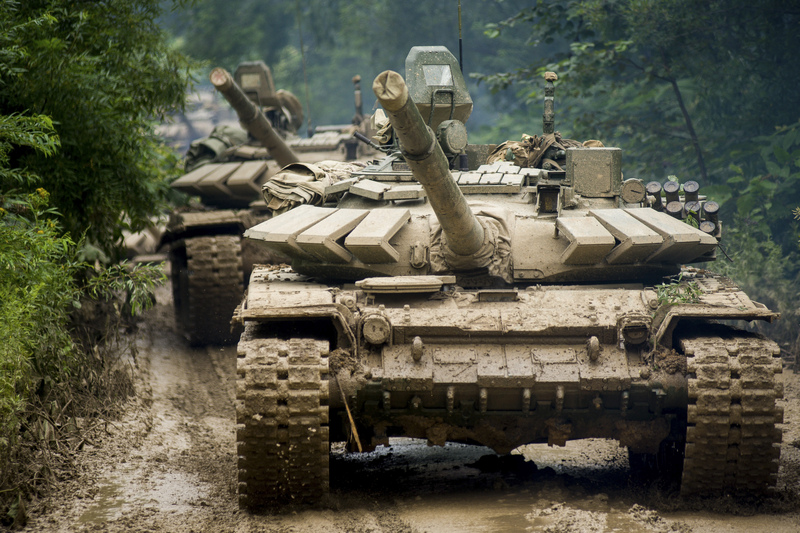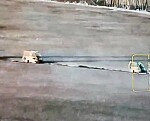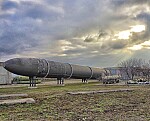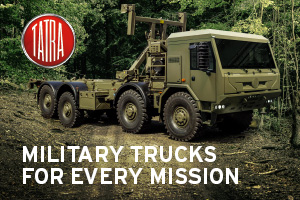Russia's answer to FPV drones: Instead of Armata and T-90 tanks, the project of remotely piloted vehicles Sturm returns
The Ukrainian-Russian war has significantly highlighted the importance of unmanned aerial, naval, and ground technologies in combat operations. Reconnaissance and attack drones have become indispensable on the battlefield, carrying out critical tasks to neutralize enemy personnel and equipment. Additionally, ground-based unmanned logistic systems evacuate the wounded and deliver ammunition, food, and water to the front lines under enemy fire. Russia aims to enhance the combat capabilities of such systems and is reviving the development phase of Project Sturm.

In recent months, Russian-language sources have repeatedly reported on Project Sturm, which seeks to develop assault vehicles for ground forces to penetrate enemy defenses. The Russian military has tasked Uralvagonzavod with creating a versatile platform for ground-based unmanned systems capable of operating a variety of weapon systems. The aim is to minimize the loss of assault troops, particularly human lives.
According to Viktor Murachovsky, editor-in-chief of the Russian magazine Arsenal of the Fatherland, the project is based on the "relatively cheap, reliable, well-protected, and mobile" T-72 tank. Murachovsky stated in September that Russia had already begun developing the Sturm vehicles. However, the roots of this effort trace back to the 1980s, when the Soviet Union's technological limitations prevented the realization of such concepts. Decades later, the Sturm project resurfaced in open sources. In 2018, Uralvagonzavod discussed the development of a ground-based unmanned system, as mentioned by its director, Aleksandr Potapov, during the Azerbaijan Military Equipment Fair (ADEX).
Potapov noted that the Russian Ministry of Defence had agreed on the system's technical specifications based on the T-72B3 tank. Uralvagonzavod was "partly convinced" at the time that an order from the armed forces was likely. Subsequently, typical Russian opacity obscured the project's progress, including whether a prototype had been completed. By 2021, media reports emerged about the start of prototype construction, including a mobile control vehicle. During the Russian arms fair Armiya 2021, the Ministry of Defence signed an initial contract for Sturm systems, but the details were not disclosed. These were likely prototypes destined for testing.
By April 2022, Uralvagonzavod was preparing for factory trials as construction of the first prototypes neared completion. These trials included testing a shortened 125mm-caliber gun. However, the Russian invasion of Ukraine likely shifted priorities at the Nizhny Tagil plant, delaying the project. It wasn't until 2024 that reports, including from Moskovskii Komsomolets and Voyennoye obozreniye, suggested the project's continuation or restart. In October 2024, Voyennoye obozreniye reported on "research work on one or several machines" equipped with a 30mm gun, RPO-2 Shmel flamethrowers, and a TOS-1A rocket launcher.
The primary role of the unmanned assault system will be advancing on the front line, detecting enemy defenses, identifying fire positions, and either neutralizing or marking them for other units. "Given the reality of combat, losing a T-72-based system is less significant than losing a robotic Armata," Murachovsky explained. To achieve this, Sturm envisions using automation equipment from the T-14 Armata tank, adapted into a tankless configuration. Its fire control and operator situational awareness systems will derive from upgraded T-90 tanks.
However, a fully autonomous fire control system for ground operations remains distant. "No one in the world, including Russia, is ready to deploy tracked cyborg vehicles on the battlefield," noted Voyennoye obozreniye.
The Sturm project includes four types of combat vehicles. The first is a 50-tonne main battle tank that carries a 125mm gun with a shortened four-metre barrel (to improve the tank's manoeuvrability in urban areas) and a 22-shot autoloader. The second is to be a fire support system, the armament of which would include rockets or a reactive infantry flamethrower, the Smel-M. Its typical targets will include live forces, light vehicles and shelters. The third vehicle is another fire support version with two 30mm 2A42 guns with a 1,000 round magazine and thermobaric missiles. In this case, it will be similar to the Terminator armoured tank fire support vehicle, also produced by Uralvagonzavod. Finally, the fourth vehicle is a tankless version of the TOS-1A heavy rocket launcher with a 220mm MO.1.01.04M launcher and 16 thermobaric rounds with an effective hit area of 25,000 m2.
All Sturm vehicles will include a remote-controlled Kalashnikov 7.62mm machine gun, a bulldozer plowshare, and active protection systems. The original Ministry of Defence requirements stipulated that the vehicles must remain combat-capable after sustaining 10–15 anti-tank shell hits and surviving a mine detonation. Lessons learned from the war in Ukraine have likely updated these requirements, possibly including survivability against FPV drone strikes. Additionally, Sturm vehicles must maneuver effectively in urban environments, allowing unimpeded turret rotation in tight spaces.
According to Viktor Murachovsky, vehicle sensors operating across various wave ranges (ultrasonic, optical, infrared) will be employed to enable automatic convoy movement, route guidance, terrain evaluation, and the ability to overcome natural and technical obstacles. Sturm vehicles will also incorporate navigation and self-orientation aids, along with "friend-or-foe" identification systems. These unmanned vehicles are designed to maximize autonomy in movement, maneuvering, and obstacle avoidance, supported by protected communication systems and self-protection programs in case of jamming or control signal interception. However, most functions are expected to remain operator-controlled. The ultimate goal is to minimize operator involvement, limiting their role to monitoring equipment or unit performance and approving the use of offensive weapons.
The maximum speed of these systems under remote control will reach 40 km/h. A highly mobile command and control unit, based on the T-72B3 chassis, will oversee the operation of the vehicles. Each command post is expected to control a platoon of combat vehicles within a 3 km radius. Networking multiple robotic systems will improve communication reliability with the control center while ensuring mutual coverage of combat units.
The Ukrainian-Russian war has not yet witnessed the widespread deployment of unmanned ground attack systems. Instead, remotely piloted FPV drones have emerged as the main threat to vehicles, including tanks. These drones, with their favorable price-to-performance ratio, have yet to face an effective countermeasure. Voyennoye obozreniye identifies the Sturm project as a potential solution. Unlike drones, ground vehicles process significantly more incoming information and, when combined with artificial intelligence elements in the Sturm fire control system, may gain advantages on the battlefield—such as neutralizing threats or alerting other units to high-priority dangers. Russian unmanned vehicles are projected to be cheaper, more technologically advanced, and less vulnerable than traditional tanks. Crucially, the absence of human crews allows these vehicles to continue operating even if their armor is compromised, provided critical systems remain intact.
Russia’s ability to successfully complete the Sturm project depends on providing unmanned vehicles with cost-effective and efficient protection against FPV drones while keeping overall costs manageable. Damaged systems will likely need to be written off, as field repairs may be impossible. Sturm vehicles also require advanced artificial intelligence to evaluate battlefield conditions and address non-routine challenges. A further hurdle is communication jamming or control signal interception, which could result in a complete loss of control over remotely operated units. Addressing these challenges effectively could determine the success of the Sturm project. However, given the technological limitations of the Russian defense industry, achieving these goals in the near future appears unlikely.








